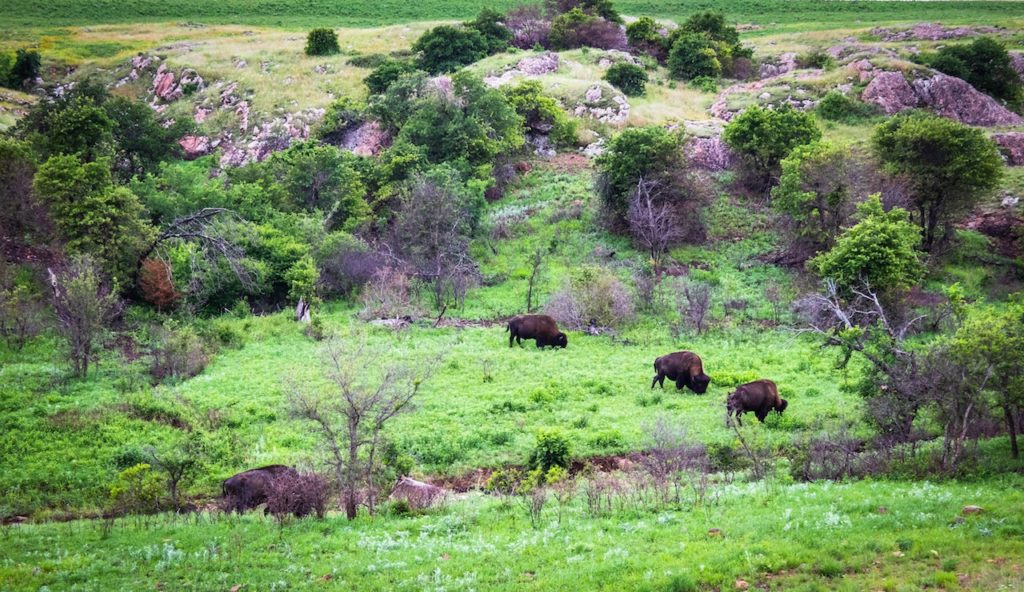Budgeting resources isn’t just a problem for humans preparing a holiday dinner, or squirrels storing up nuts for the winter.
A new model of how animals budget their energy sheds light on how they live and explains why they tend to evolve toward larger body sizes. The research, published in PNAS, proposes that animal energy budgets are governed by a key mechanism: resource variation — a measure of how spread out or clumped up food and water are.
“Every single thing has to do this, from single-celled life forms all the way up to mammals or dinosaurs,” says co-author Justin Yeakel (University of California Merced). “Animals have to decide how they route their energy, whether it’s to build more mass onto themselves, or invest in reproduction, or what have you.”
To map an animal’s theoretical life-history, the authors rely on several key variables: how much energy an animal has stored, its metabolism, the cost of reproduction, and how much stored energy is delivered to its offspring. “An animal is described just by its energy state — like a video game with health points,” says lead author Uttam Bhat (University of California Merced). In this way, the rise and fall of each individual’s energy budget over a lifetime gives its history.
But acquiring resources isn’t necessarily easy; food doesn’t always grow on trees — literally. According to Bhat, previous models of energy allocation have often assumed that resources automatically came to animals, as if through a pipeline. In their new model, the authors give resources a spatial dimension. Resources can be spread out over an area uniformly, like grassy plains, or clustered, like fruit bushes. Fluctuations in the availability of these resources, such as the distance between fruit bushes becoming larger, can have an enormous impact on animals.
“If you have a lot of uncertainty, you want to have a lot of buffers in your body,” says Bhat. Typically, this means an increase in body size — bigger bodies have more room for energy storage.
Cope’s rule proposes that the size of animals generally increases across their evolutionary lineage. The fossil record bears this out for most mammals: tens of millions of years ago, the ancestors of elephants and blue whales were tiny, mouse-sized creatures. (Mice-sized mammals, of course, are also still around.)
The new model shows that the more spread out and patchy an animal’s food is, the more unstable its population, with smaller animals more affected and likely to go extinct.
Between twenty million years ago and five million years ago, grasslands sprouted up around the world. For mammals that adapted by growing large enough to graze on grasslands, food was ubiquitous; mammals that remained small were unable to partake, and less certain to secure dinner. If you plug in the variables to the authors’ model, what you get is what the fossil record shows: an evolutionary pressure for herbivores to grow larger, from rodent-sized to bison.
“It’s sort of fun, I think, that we build up from single-organism risk all the way to long-term evolutionary trends,” says co-author Chris Kempes (Santa Fe Institute). “I think the push to address lots of the major questions in this way is where much of the future of ecology lies.”
This interdisciplinary work was initiated at the Santa Fe Institute and blends the physics, biology, and statistics expertise of authors Bhat, Yeakel, and Kempes.
Original post https://alertarticles.info
